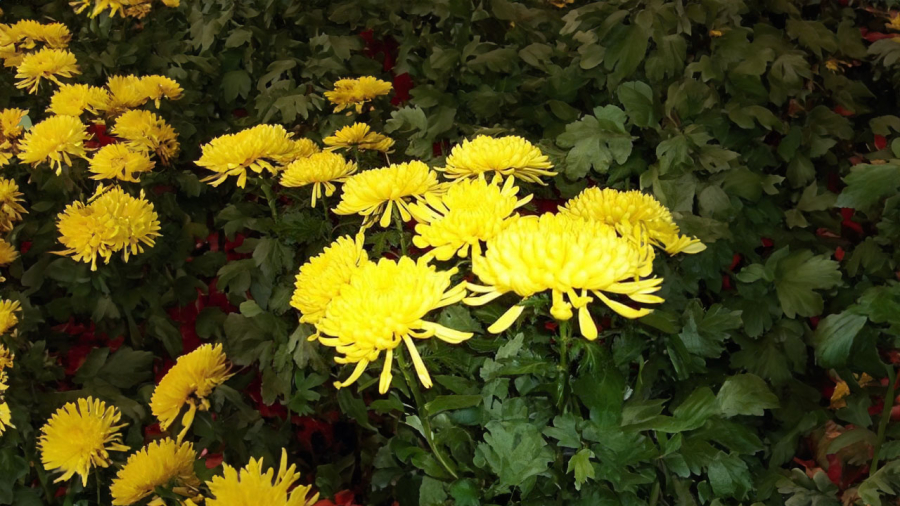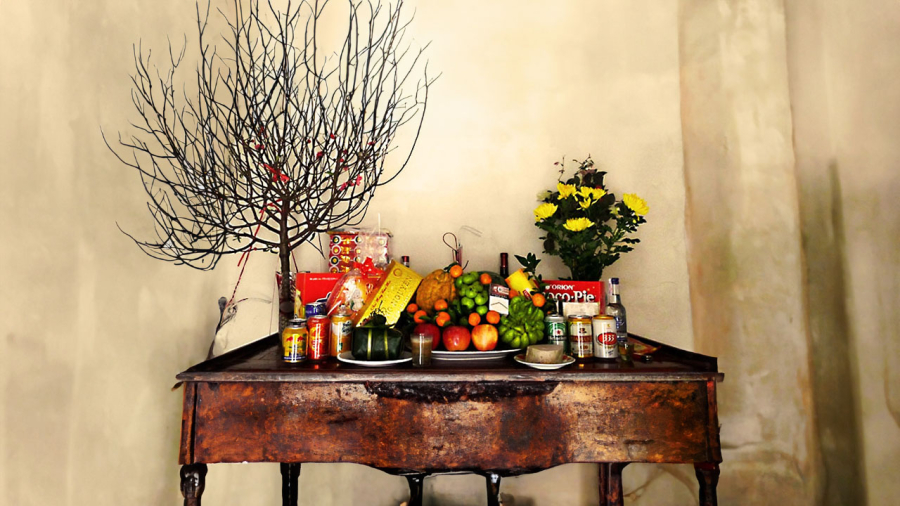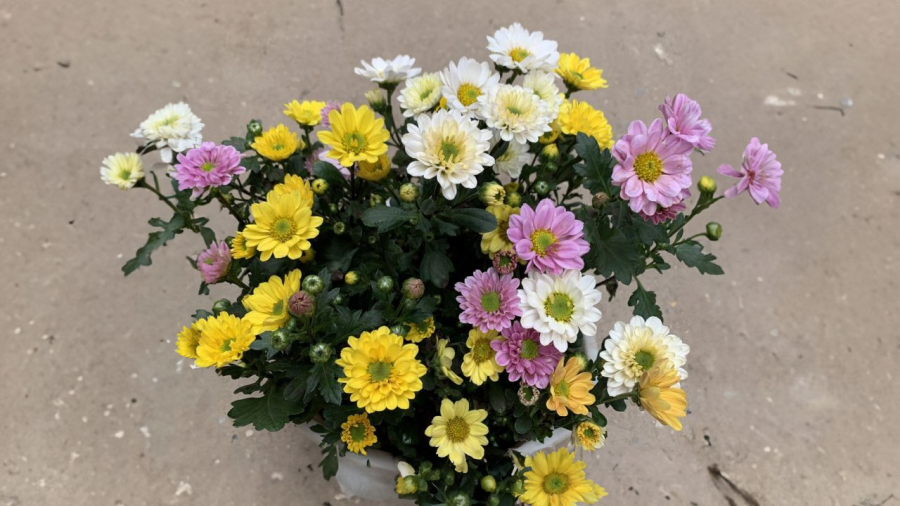Chrysanthemums, or cúc in Vietnamese, are a type of flower that can be found all year round and are often present at the bi-monthly rằm celebrations. They are also the most familiar flowers, used from the start of the year to the end, from ancestor worship to Lunar New Year celebrations, and from worshipping the gods to business openings and mụ celebrations.

What is the significance of chrysanthemums for incense burning?
There are many varieties of chrysanthemums, including đại đóa, chi, thược dược, vạn thọ, trứng, and khổng tước, to name a few. They also come in a range of colors such as white, yellow, green, red, purple, and orange.
The types of chrysanthemums typically used for incense burning are the yellow đại đóa or trứng and đồng tiền vàng varieties. These flowers are believed to bring wealth, longevity, and good fortune to the family. According to a legend, a filial child who wanted their mother to live a long life sat and tore each petal of a chrysanthemum, believing that with each petal, their mother’s life would be extended by a year. Thus, chrysanthemums have become synonymous with filial piety and respect for one’s ancestors, parents, and elders.

When chrysanthemums are offered during incense burning, it is a way of honoring one’s ancestors and seeking blessings of good health, harmony within the family, and filial children.
Chrysanthemums have been widely cultivated since ancient times due to their ease of growth and year-round blooming. They are also one of the four noble flowers (tùng cúc trúc mai) revered by the ancients.
The warm, golden hue of chrysanthemums symbolizes prosperity and good fortune. When displayed on an altar, they add aesthetic appeal to the worship space, as the altar is typically made of dark wood, and the offerings often include green bananas, red apples, yellow pomelos, and colorful oranges and tangerines. Thus, the golden chrysanthemums enhance the harmonious interplay of the five elements on the altar.

Chrysanthemums of various colors are considered less formal and are therefore more suitable for decorating living rooms than for worship.
Why are chrysanthemums of other colors (white, purple, green, and red) less commonly used for incense burning?






























